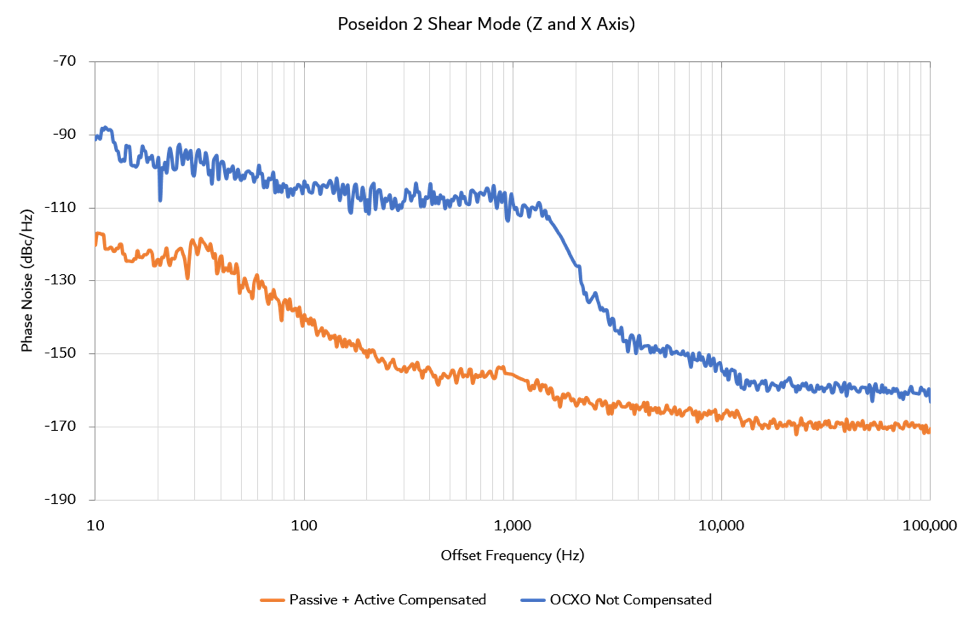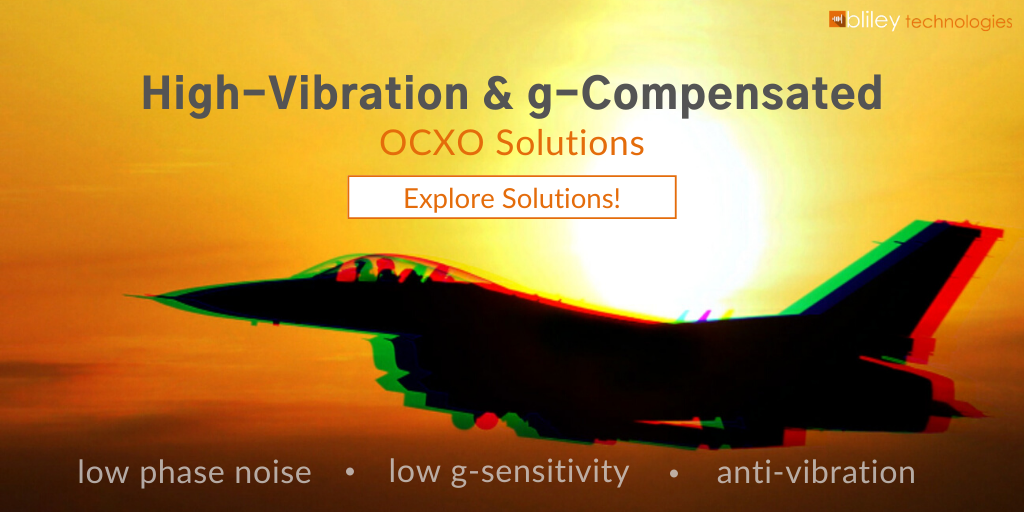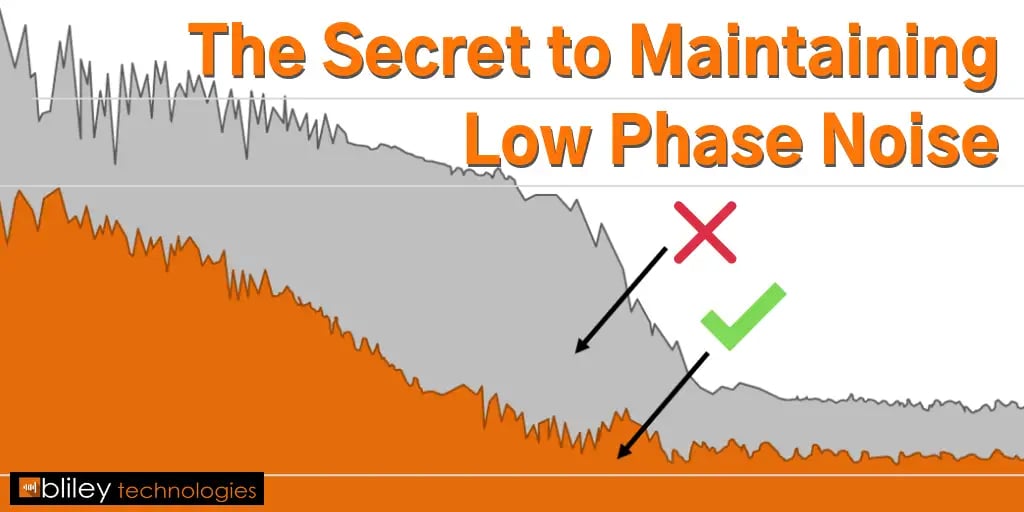
Quartz crystal oscillators are the high and mighty option for low phase noise and added frequency stability in circuit design. Yes, simple oscillators like those made with resistor-capacitor (RC) or inductor-capacitor (IC) resonators are fine for some circuits.
But if you're dealing with higher performance applications in the aerospace, military, and space industries, you're going to want a higher performance crystal oscillator that can maintain low phase noise and strong stability. Otherwise, you'll risk deviating from the very specific (and usually critical) center frequency selected for your design.
In this blog, we'll discuss how to measure low phase noise and how to maintain it in your applications.
Phase Noise & Frequency Drift
A perfect crystal oscillator in a perfect world would produce a perfectly repetitive signal at a very specific frequency. But of course, we don't live in a perfect world.
Noise processes in electronic components and resonant circuits cause the center frequency to deviate from its desired value. Other reasons for frequency drift include changes in temperature, vibration, and g-forces.
This unwanted noise in a frequency signal can be measured as phase noise.
Related: How to Maintain Frequency Stability in Crystal Oscillators
How to Measure Low Phase Noise in Oscillator Signals
It's important to be able to measure and monitor the phase noise levels in your crystal oscillators as they can vary over time due to crystal aging or other external factors, such as g-force, vibration, and temperature.
Phase noise is measured in the frequency domain and is plotted as signal amplitude vs. frequency. For fairly noisy signals, phase noise can be clearly seen right on a spectrum analyzer. But most crystal oscillators produce a very clean signal.
In this case, the noise of the analyzer's local oscillator is higher than the noise of the oscillator being measured, making it very difficult to observe the phase noise directly. Increasing the sensitivity of the measurement process must now be implemented.
The most common way to measure phase noise in fairly clean oscillator signals is to compare one oscillator to another. Most commercial phase noise measurement systems use this method.
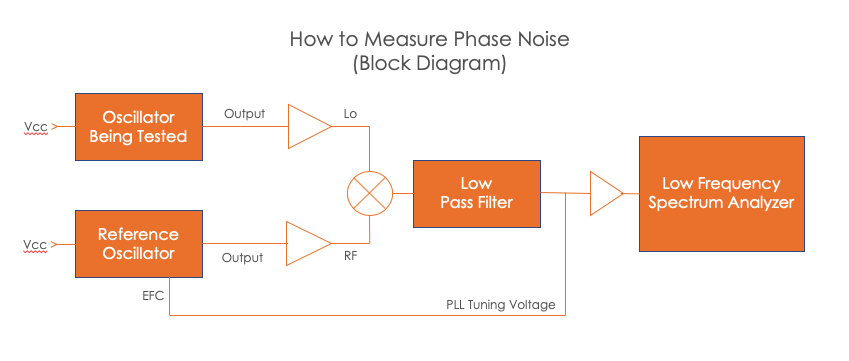
An ultra low phase noise reference oscillator is designed to operate at the exact same frequency as the unit being tested. This signal and the signal of the oscillator being measured are then fed into a phase detector. Their relative phase noise is then adjusted and locked at a 90 degree offset with the carrier frequencies removed by the mixer. Now, the residual noise modulation that has been mixed down to the base-band frequency remains. This signal is then amplified to increase the sensitivity.
This amplified residual noise that remains can now be examined closer with a very low bandwidth analyzer. These readings are typically expressed as the ratio of the sideband noise power (measured in a 1Hz bandwidth at a given offset distance from the center frequency to the carrier signal power).
Related: The Ultimate Guide to Understanding Phase Noise
How to Maintain Low Phase Noise in Crystal Oscillator Circuits
What's the secret to maintaining low phase noise? Selecting a high performance, low phase noise crystal oscillator that can maintain low phase noise over a long period of time.
As discussed before, phase noise can also increase due to external factors such as vibration and g-force deviations.
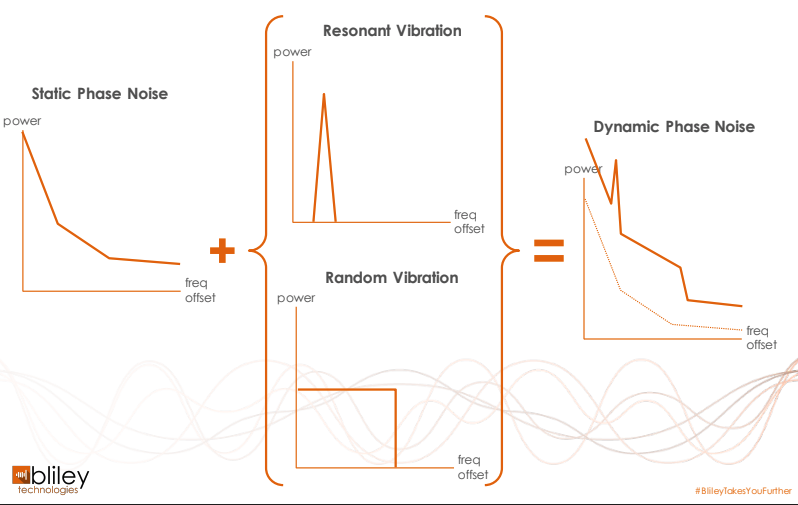
Using a high quality, low phase noise oscillator is the key way to solve the problem of phase noise. There are vibration resistant and g-sensitivity crystal oscillators specifically designed to handle these rugged environments.
For example, the Poseidon 2 Low Phase Noise & Low g-Sensitivity OCXO offers the world's lowest phase noise (even in strong vibration and g-force environments).
The Poseidon 2 low phase noise oscillator uses what's referred to as "active compensation" to achieve low phase noise in your oscillator circuits and maintain it over time. This includes both electronic and mechanical compensation.
The quartz crystal used in this oscillator is also precisely cut in a way to help it achieve very low phase noise and precise frequency stability over temperature and time. This is known as an SC cut quartz crystal.
Achieve Low Phase Noise with High-Vibration and g-Compensated OCXOs
Ready to take your high-vibration and g-sensitive communication applications further? Check out our anti-vibration and low-g solutions!
